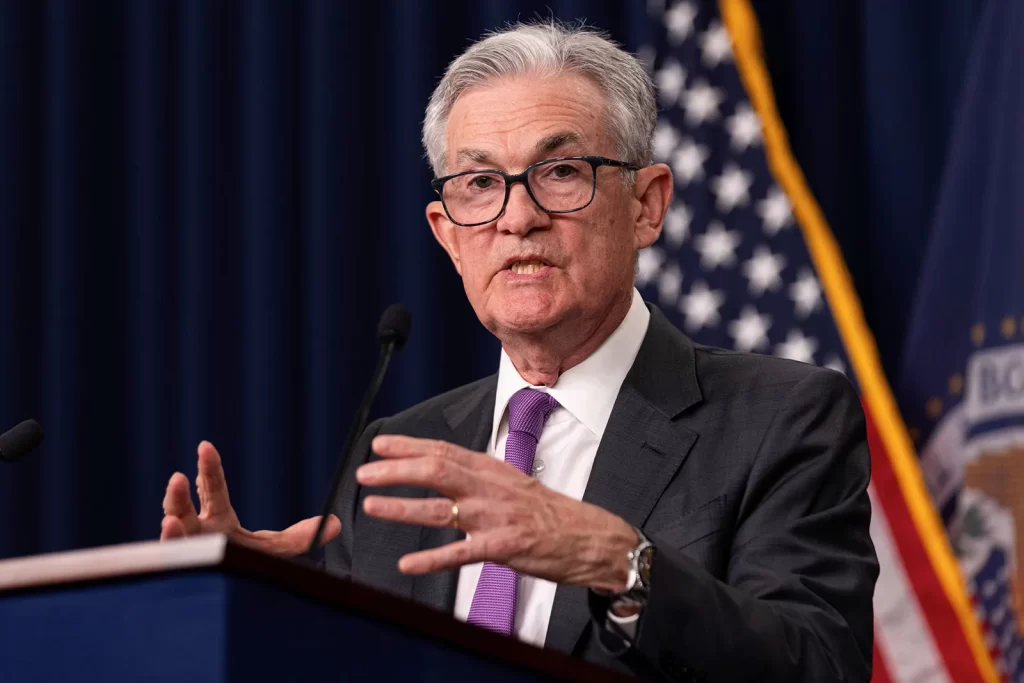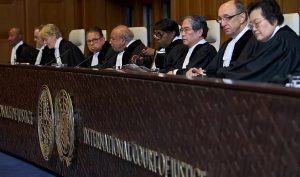
Jerome Powell, the chairman of the US Federal Reserve, has firmly rejected any speculation that his position might be at risk under the incoming administration of Donald Trump. In a press conference after the Fed announced a cut to interest rates, Powell addressed questions about his tenure, stating that it is “not permitted under law” for the White House to remove him from office. Powell, who was appointed to lead the Federal Reserve by Trump in 2017, emphasized that he would not resign if asked, reinforcing the independence of the central bank.
The Fed’s decision to cut the key lending rate by 0.25 percentage points, reducing it to a range of 4.5%-4.75%, was seen as a response to ongoing economic conditions, including concerns about inflation and government borrowing. While some forecasters expect further rate cuts in the months ahead, the uncertainty around Trump’s economic policies, including tax cuts, tariffs, and immigration reform, is creating potential risks for inflation. Economists argue that Trump’s proposed 10% tariff on all imports could increase consumer prices, while tax cuts may fuel inflation by boosting demand.
Additionally, Trump’s plan for mass deportations of immigrants could disrupt the US workforce, leading to higher wages as businesses compete for labor. These policy proposals could complicate the Fed’s efforts to stabilize prices and could drive up government borrowing costs, as reflected in the recent rise in US debt interest rates.
When asked about how Trump’s policies might affect the US economy and Fed policy, Powell was cautious. “It’s too early to tell what policies will be implemented or when they will take effect,” he said. He assured reporters that the election results would not immediately influence the Fed’s policy decisions. Powell also noted that the central bank would continue to focus on its dual mandate: maintaining stable prices and promoting full employment.
Despite his calm demeanor, Powell’s relationship with Trump has been tense over the years. The president has frequently criticized Powell’s decisions, particularly the Fed’s interest rate hikes during his first term. Trump called Fed officials “boneheads” on social media and even discussed whether he had the authority to remove Powell. This year, reports suggested that Trump allies were exploring ways to take more control over the Federal Reserve, including potentially forcing Powell out by naming a new chair before his term ends in 2026.
In response, Powell has stood his ground. “It’s not permitted under law for anyone to remove me from office before my term is up,” he said, reinforcing the legal protections designed to preserve the independence of the central bank. Although Trump has repeatedly said he believes in voicing his opinions on the Fed’s actions, he also indicated he would allow Powell to serve out his term if he thought the chairman was doing the right thing.
Powell has faced intense scrutiny over the last two years, particularly as inflation surged in 2022. In response, the Fed aggressively raised interest rates, bringing them from near-zero to over 5% by mid-2023. These hikes have directly affected consumers, raising borrowing costs for mortgages, credit cards, and personal loans, which in turn contributed to rising discontent about the cost of living. This situation played a role in the political climate leading up to the election.
However, in recent months, inflation has begun to stabilize. By September 2023, inflation had dropped to 2.4%, down from over 9% in mid-2022. The Fed’s decision to cut rates by 0.5 percentage points in September and another 0.25 percentage points in November was seen as a sign of confidence that price increases were slowing. Powell indicated that the Fed would continue to monitor the economy closely, though he refrained from offering specific guidance on future rate cuts.
Despite strong hiring data earlier in the year, the job market showed signs of slowing in October, with nearly no job growth reported, partly due to the impact of hurricanes and strikes. Powell noted that the Fed would likely continue to cut rates but emphasized that the pace of these cuts would depend on the unfolding economic conditions.
Some market analysts, such as Whitney Watson from Goldman Sachs Asset Management, predict that the Fed may implement another rate cut in December but cautioned that uncertainty surrounding fiscal policies, including Trump’s trade plans, could prompt the Fed to slow the pace of rate reductions in the future. “There are rising risks that the Fed may opt to skip rate cuts next year,” Watson said.
Powell’s statements came as the Bank of England also cautioned that borrowing costs may remain higher for longer, warning that inflation could increase again following the UK government’s recent budget.
“In both the US and the UK, expectations for rate cuts have been scaled back compared to earlier projections,” said Lindsay James of Quilter Investors. “In the US, interest rates will likely stay higher for longer as the Fed assesses the true impact of Trump’s economic policies.”
In conclusion, Powell’s firm stance on his position at the Fed underscores the ongoing independence of the central bank, even in the face of political pressure. The road ahead remains uncertain, but the Fed’s focus on balancing inflation control with employment will continue to guide its decision-making in the coming months.







